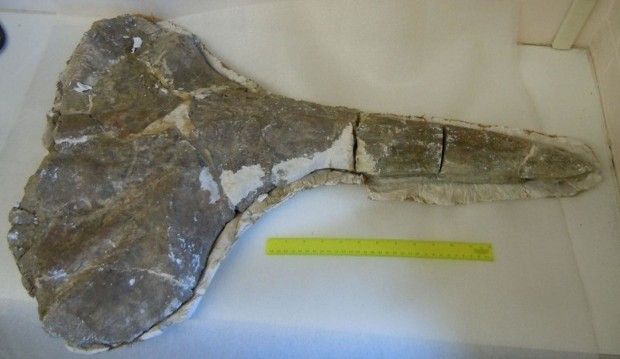A recent paper published in the journal Proceedings of the National Academy of Sciences announces the discovery of a 17-million-year-old whale carcass oddly deep inland in Kenya, Africa.
The ancient marine mammal remains were pulled from the ground at a distance of about 740 kilometers (460 miles) from the shoreline, in a dry desert region.
How does a whale end up on land and in Africa of all places?
No, it's not that whales living millions of years ago had legs and were in the habit of going walkies on land every once in a while, just to see what life out the ocean was like, maybe even get a good tan.
As explained by paleontologist Louis L. Jacobs and his team, this one marine mammal got stranded far inland in present-day Kenya after having made the mistake to swim up a river that used to flow in the region.
Thus, the whale remains were recovered from ancient river sediments at an elevation of roughly 620 meters (2,030 feet). All things considered, chances are the marine mammal swam inland by mistake.
The researchers go on to detail that, according to geological evidence at hand, ancient Africa was a lush, luxurious place. It had forests and even jungles, and plenty of rivers and streams crisscrossed it.
“The whale was stranded up river at a time when east Africa was at sea level and was covered with forest and jungle,” Southern Methodist University scientist Louis L. Jacobs said in a statement.
The marine mammal was a beaked whale belonging to the Ziphiidae family. Paleontologists estimate that, when alive, it measured approximately 7 meters (23 feet) from head to tail.
A better understanding of the history of the African continent
Writing in the journal Proceedings of the National Academy of Sciences, paleontologist Louis J. Jacobs and his colleagues say that the discovery of these fossilized whale bones sheds new light on Africa's history.
More precisely, the remains indicate that, 17 million years ago, the African continent sat at a lower elevation. As the continent began to rise, the local climate became drier and deserts formed.
Primates, humans included, managed to adapt to the new environment. In fact, these shifts in Africa's vegetation are hailed as a driver of human evolution. Many other species, however, simply vanished.
“Primates evolved to adapt to grasslands and dry country. And that’s when - in human evolution - the primates started to walk upright,” explained paleontologist Louis L. Jacobs.
The ancient whale carcass studied by Louis L. Jacobs and his team, and indicating that rivers, forests and jungles once covered Africa, is the only one ever discovered so deep inland on this continent.
Interestingly enough, the whale bones were first unearthed in 1964 by a researcher named J.G. Mead. They were lost in storage for decades and resurfaced in 2011 at the Harvard University in the US.

 14 DAY TRIAL //
14 DAY TRIAL // 

